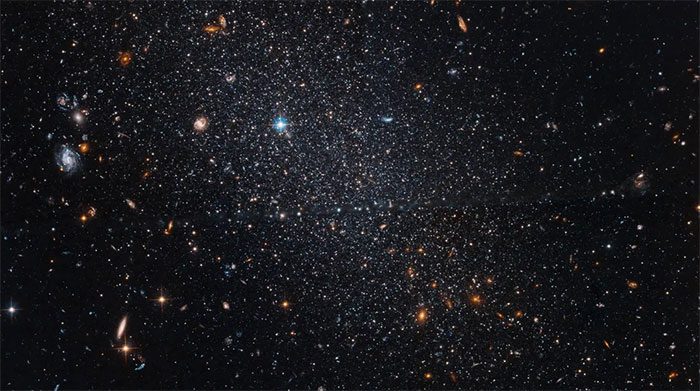NASA describes what is known as a “remote cosmic fossil” located right in the Local Group, where the galaxy containing Earth resides.
According to NASA, the cosmic fossil in question is the Tucana dwarf galaxy, situated 3 million light-years away from Earth. New observations from the Hubble Space Telescope have revealed its intriguing nature.
This galaxy is located at the edge of the Local Group, which is a collection of galaxies including the Milky Way (the galaxy that contains Earth), Andromeda, Triangulum, NGC 300, NGC 55, NGC 404, and more.

Tucana is a faint spherical galaxy located 3 million light-years from Earth – (Photo: NASA/ESA)
Hubble’s new perspective on Tucana showcases billions of twinkling stars, but they appear quite dim compared to the typical brightness of stars in other galaxies.
This dimness is attributed to the age of the stars: According to NASA, they may be remnants from the early universe, belonging to the first generations of stars formed after the Big Bang.
This classification places Tucana among the types of dwarf spheroidal galaxies, which are small, faint, contain very little dust, and host an older star population.
NASA notes that Tucana is even dimmer than other dwarf spheroidal galaxies, indicating that its contents are very ancient.
“Such primordial characteristics allow scientists to use the Tucana dwarf galaxy as a cosmic fossil,” NASA officials stated in a document cited by Space.com.
Tucana is located about 3.6 million light-years from the center of mass of the Local Group, relatively far from the Milky Way and other galaxies.
Researchers believe it was initially much closer but has since changed position after a close encounter with the Andromeda galaxy, which is massive and a neighbor of the Milky Way.
The encounter between Andromeda and Tucana occurred approximately 11 billion years ago, causing the tiny dwarf galaxy to be literally flung away.
However, because of this ejection, it has maintained an isolated status and has not merged with other galaxies throughout its development. Therefore, it can provide an important, pristine piece of the puzzle regarding the composition of today’s galaxies.
“Dwarf galaxies may be the building blocks for larger galaxies, and studying them can help trace galaxy formation back to the early epochs of time,” NASA explains.


















































